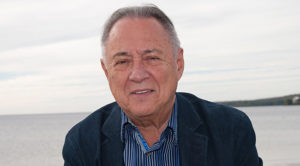Outdoor classroom setting ideal for learning nation-to-nation history for students and teachers

By Kelly Anne Smith
NORTH BAY— The Director of Enji giigdoyang – The Office of Indigenous Initiatives
at Nipissing University, Tanya Lukin-Linklater, calls the Treaty Education Mentorship Project (TEMP) a project of good work that is happening in the area of treaty education.
A recent partnership between Nipissing University, the Near North School Board’s Amanda Mathias-Mizzi and Maurice Switzer created TEMP.
Supported by the Ministry of Education, TEMP helps students understand the history behind the Treaty agreements. A focus on the Indigenous culture is also experienced.
Nipissing University partnered with the Near North District School Board for the professional development of existing teachers, as well as teachers newly graduating from the Schulich School of Education. Participants represented the public and separate school boards.
A three-day event in April took place at Nipissing University mostly in the Treaty Learning Centre. The outdoor portion took place on the forest side of the Education Centre pond. The Treaty of Niagara and The Royal Proclamation was taught.
“There was snow on the ground and some participants gathered wood and made a fire for a very interesting morning,” recalled Switzer.
Maurice Switzer spoke about wampum. He had people holding the wampum Treaty belts while he explained the specifics of the agreements behind each one.
“It was really an engaged group. We talked about what Treaties mean. Unfortunately, most Canadians would think of them as an ancient document, but they are still valid today as the courts are starting to determine,” said Switzer. “For example, there is a court case going on in our area about annuities being paid to thirty-thousand First Nation beneficiaries of the Robinson Huron Treaty. This is a Treaty that was supposed to share the immense mineral resource wealth taken out of this part of Ontario. It was supposed to increase as the value of resources increased which is in the trillions of dollars and First Nation community members are being paid four dollars a year.”
Always a warrior for human rights, Switzer is an Ontario Human Rights Commissioner and he runs Nimke Communications. Switzer has been trying to learn as much as he could about Treaties for the last 20 years.
“I have had some good teachers, people like Alan Corbiere, the Anishinaabemowin Revival Program Coordinator at Lakeview School, M’Chigeeng First Nation.”
Switzer has kept an eye on the historical promises made to Indigenous people.
“I’ve developed this idea, that from a legal perspective, a broken promise is better than no promise at all. And sooner or later, the law catches up. I feel the learning that I’ve done is very pertinent particularly with what is happening in mandatory curriculum coming into the schools this Fall in Ontario on Indigenous issues.”
As education has started to be more inclusive of the Indigenous part of Canada’s history, Switzer has responded to many requests from all over Southern Ontario to go to share Treaty relationships.
“I’ve been going as far as places as Windsor, Sarnia, Ottawa. I’ve done a presentation on Treaties in Fort Frances. I love doing them, but it dawned on me that one of things that I could contribute to is the development of a pool of people across the province who had knowledge of the Treaty concept and process in general, but specifically about Treaties in their areas.”
Switzer is familiar with the Robinson Huron Treaty affecting North Bay and Nipissing First Nation. His community, Alderville First Nation, is a Williams Treaty First Nation.
Switzer envisions Treaty resource people could work with educators in Ontario’s 72 school boards.
“They could work with teachers and administrators in their board to talk about the Treaty concept and the Treaties relevant to their part of the province. There are 46 Treaties in Ontario.”
Switzer credits Nick Bertrand, a Mohawk from Tyendinaga First Nation with the Ministry of Education, for being a champion of TEMP. That set the stage for the Treaty Education Mentoring Project to start teachings.
Land based education is considered more and more important says Switzer.
“Of course, Indigenous peoples have always understood the importance of learning on the land.”


